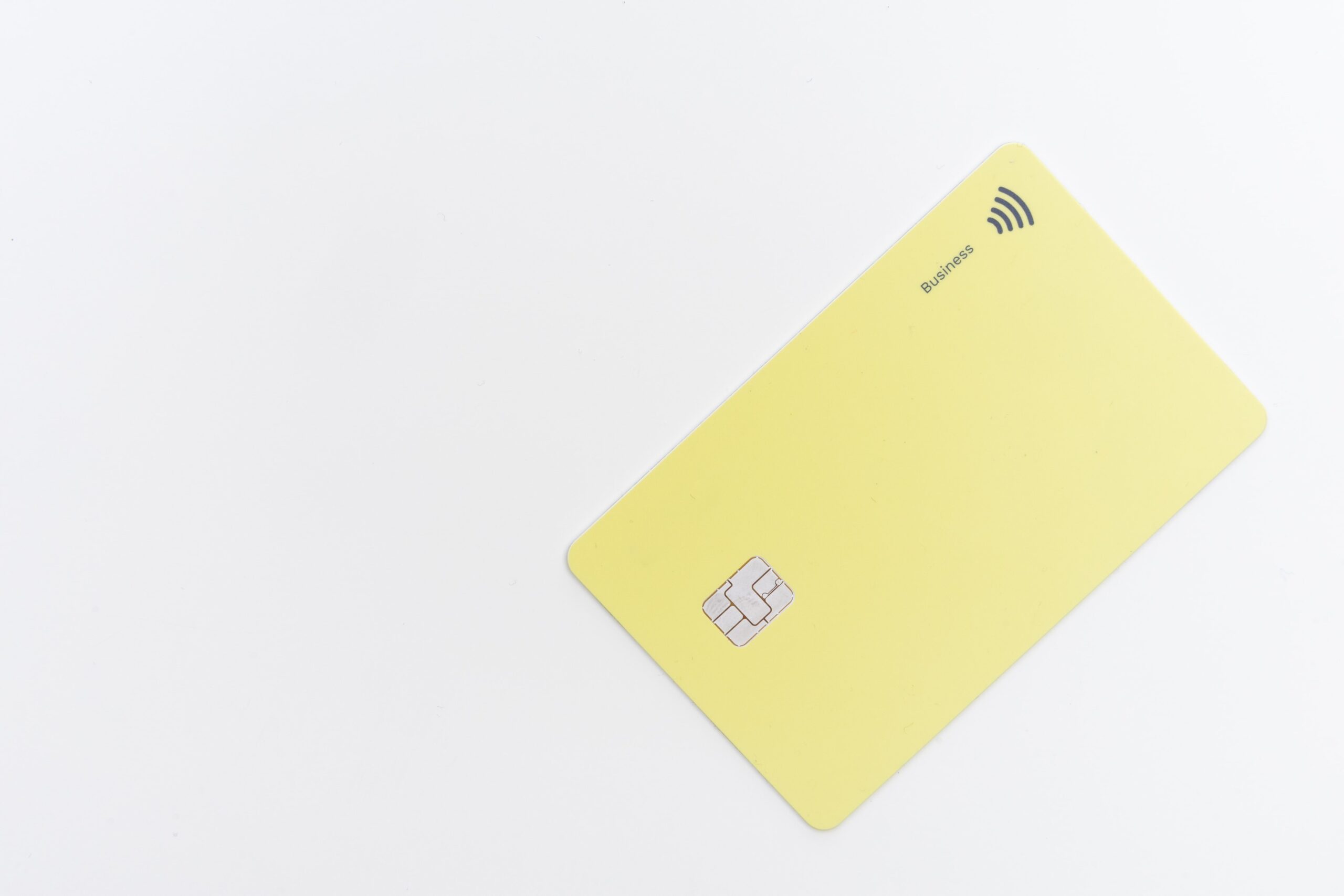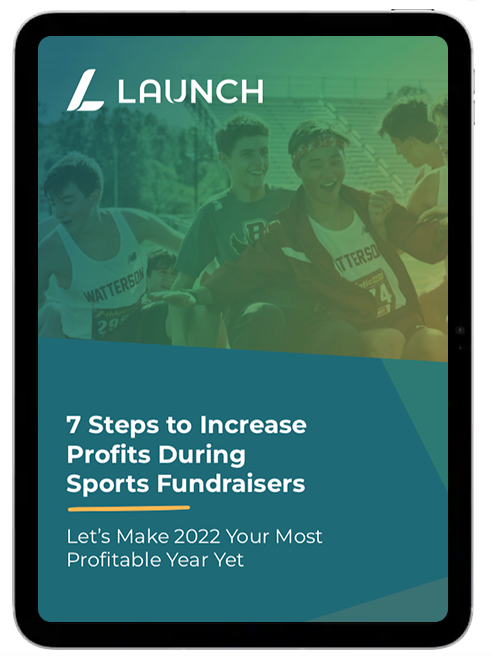The way we interact has changed. It’s time your fundraising strategies change with it.
The Complete Guide to Digital Fundraising
Fundraising strategies have changed as much in the past two years as they had in the previous decade. Although that might cause some concern among coaches, school administrators, and parents who are trying to keep up, the truth is that these changes are actually a great thing.
Even though in-person events and other traditional fundraising activities have become less popular in light of the pandemic, the digital fundraising tactics that replaced them have numerous benefits. However, if you still try to stick to your tried-and-true fundraising methods that worked pre-COVID, you won’t have the same success.
This comprehensive guide to digital fundraising will walk you through various strategies and tools to use in your modern fundraising efforts. Read the full guide below, select your specific chapter in the table of contents, or download our step-by-step process to digital fundraising here.
The Post-COVID Fundraising Environment
Whether you’re a high school coach, teacher, or parent (or all of the above!), the ways in which we used to raise money have changed dramatically since 2020. We’ve gone from a heavy reliance on in-person events and communications to predominantly digital strategies that stretch the creativity of you, your team members, students, and kids alike.
But here’s the thing — that’s a good thing. Our growth as digital fundraisers creates new opportunities for donors to participate and gives fundraising teams ways to reach more people. Now, we can stop trying to force our way back into outdated processes and instead rely on proven methodologies of raising more money. Here are three main takeaways that we’ve gleaned in the post-COVID digital fundraising environment:
Technology Matters — More than ever, having reliable technology matters. This starts with a digital fundraising platform and includes everything from funds tracking and organization to reliable communication.
Community Engagement Is a Must — With the right technology in place, it’s time to become as engaged in the community as possible. When you are using your technology to reach and engage with community members, your community is more likely to rally around your fundraiser.
Flexibility Is Crucial — When your fundraising tactics are flexible, you are better able to respond to crises and enact contingency plans that keep your fundraiser operating without a hiccup.
We like to be as optimistic as possible, and one of the best things we gained from COVID was the advancements made in the digital fundraising space. For a deep dive into these strategies, read our full article here.
The Advancements of Mobile Fundraising
Among the strategies we didn’t discuss above is mobile fundraising. Perhaps more impactful than anything else in terms of the future of fundraising is the manner in which mobile fundraising has risen to prominence in the past two years. Now, we’re not just talking about GoFundMe and other crowdfunding platforms (more on that in a bit).
When we say mobile fundraising, we mean complete fundraising strategies that start and end with a mobile device — from the initial inception of the fundraiser to outreach efforts and funds collection. Donors are eager to participate in fundraisers, especially when they know it will better their community, school, or the life of a loved one.

When you approach your fundraiser through a mobile lens, you can:
- Accept contactless transactions
- Eliminate paper order forms
- Reach more donors through social sharing
- Track funds raised per participant
- Organize the entire fundraiser from one place
Updating your digital strategy to include mobile giving is a must in 2022. Read more about this strategy in our complete article.
Incorporate Call-a-Thons
Call-a-thons are essentially what they sound like — a marathon of phone calls! These involve making phone calls to prospective donors or supporters over a set period of time, typically lasting multiple hours, in order to raise funds as a collective group. The calls obtain donations ranging from small gifts to sponsorships that eventually accumulate into large funds.

If you’ve never led a call-a-thon before, follow these five simple steps:
- Set Goals — before anything is set in place, you need to understand the goals you’re working towards as a team. Begin by communicating what the fundraiser is for — travel to a national band showcase, entry fees into a club tournament, etc. Then, set final goals for total money raised and back your way into that goal by identifying donations needed per person.
- Find Your Audience — identify who you will be calling throughout the call-a-thon — family members, community organizations, high school sponsors.
- Organize a Script — while fundraising should be conversational, it will help to give your team a script that they can review and practice beforehand so they can have the most success possible.
- Schedule Your Event — make sure your call-a-thon is scheduled strategically to reach as many people as possible. For instance, people are less likely to answer their phones during work or when they already have plans on a weekend. Instead, find time during weekday evenings to hold the event.
- Create Competition — motivate your team members throughout the night with various incentives and leaderboard tracking
If you follow these five steps and connect your call-a-thon to a digital fundraising platform, you have a better chance of accomplishing your goals. Read our call-a-thon manifesto to learn more about each of these steps.
Master Your Email Fundraising Strategy
The final digital fundraising tactic we want to discuss is something you’re likely already using — email. However, there are a number of steps to take to ensure your email fundraising strategy is as successful as possible.
Whether your organization is completely new to email marketing for fundraising or email fundraising is quickly becoming your top strategy, some simple mistakes can prevent you from reaching your goals. Make sure to avoid these five mistakes when it comes time to create your next email campaign:
- Forgetting to Segment — the messages you deliver to different potential donors should be different. After all, you’re not going to talk to your high school’s biggest athletic sponsor the same way you would your family members, right? Strategically segmenting your list allows you to deliver highly customized messages to the right people, ultimately building better relationships and improving fundraising success.
- Being Bland — emotional plugs matter, especially when it comes to community-wide fundraising efforts. If your email campaign includes bland messaging and no graphics, how can you expect to create an emotional connection? On the other hand, when you’re able to keep audiences engaged and create subtle emotional connections through your community, you are more likely to get donations.
- Making it All About the Money — though your end goal is to raise as much money as possible, communicating that is a huge mistake. Instead, make sure the audience knows what’s in it for them by including fundraising products and direct links to your catalog throughout the email to help them make a mutually beneficial donation.
- Hiding CTAs — even if your message is catered perfectly to the right audience, they won’t be able to convert if they can’t find where to donate. Avoid this possibility by making sure your CTAs are bold, colorful, and frequent.
- Only Using Email — email is a great component of a successful digital fundraising campaign, but it can’t be the whole thing. Complement your email efforts with some of the aforementioned strategies to create a robust campaign.
Ready to experience the power of successful email fundraising? Read this blog for the next steps to follow.
The Future Is Contactless
Among the many things the pandemic proved, we learned that most people prefer contactless everything — food delivery, payment, and yes, donations. What began as a safety initiative during the pandemic has now become a factor of simplicity as contactless ways of doing things are oftentimes easier.
Following contactless payment’s rise in popularity, contactless fundraising has quickly become the preferred method that many donors live by, and that’s not going anywhere. As opposed to always needing cash or checks on hand to donate in person, donors are more willing and able to give when you accept credit card payments and make the process as easy as possible. Here are two ways that digital fundraising platforms assist in the switch to contactless:

- Contactless Transactions — taking cashless donations a step further, digital fundraising platforms improve the contactless process by improving accessibility and security. Rather than investing in a card reader, use a platform to facilitate giving as easily and safely as possible.
- Paperless Ordering — contactless tactics also mean removing the unnecessary reliance on paper. As opposed to spending countless hours organizing and managing paper order forms, digital platforms do this work for you as a fundraising leader.
The future is contactless, and the quicker you adapt to changing donor preferences, the more success you’ll have. Read this blog to learn more about contactless giving and the role that digital fundraising platforms play.
Launch Fundraising: The GoFundMe Alternative
Okay, we know what you’re probably thinking — this all sounds great, but can’t I just set up a GoFundMe and run a successful fundraiser?
In a way, yes. GoFundMe has become a leader in the industry for a reason, and if you are simply using it as a crowdfunding platform, you might be able to reach enough people to hit your goal. However, when it comes to fundraising campaigns and strategies, it seriously lacks the capabilities offered by a true fundraising platform like Launch Fundraising.

Here’s what you could be missing out on if you opt for a free crowdfunding solution rather than a digital fundraising platform:
- Real Fundraising — whereas crowdfunding simply involves donating money for various causes, fundraising typically involves an exchange that benefits both parties. Organizing a fundraiser with Launch allows you to sell various products, including popcorn, cookie dough, discount cards, and more.
- Progress Reporting — GoFundMe shows how close you are to your total goal but lacks further insight into how each participant is raising money. When you can track individual contributions on a leaderboard-style chart, you are able to encourage underperforming participants and create an environment of competition to raise the most funds.
- Efficient Processes — When organizing a GoFundMe campaign, it’s your responsibility to set up and organize the entire process. Launch Fundraising, on the other hand, connects you with a dedicated account manager to set up the campaign, show you how to get the most out of the system, and raise more money. You improve the process and make more money all at once.
Launch understands successful digital fundraising. We’ve used the past two years to help people recognize the benefits that have resulted from our switch to digital fundraising, and we can’t wait to help you! Get started on Launch Fundraising today, or browse our available products to begin organizing your next fundraiser.

